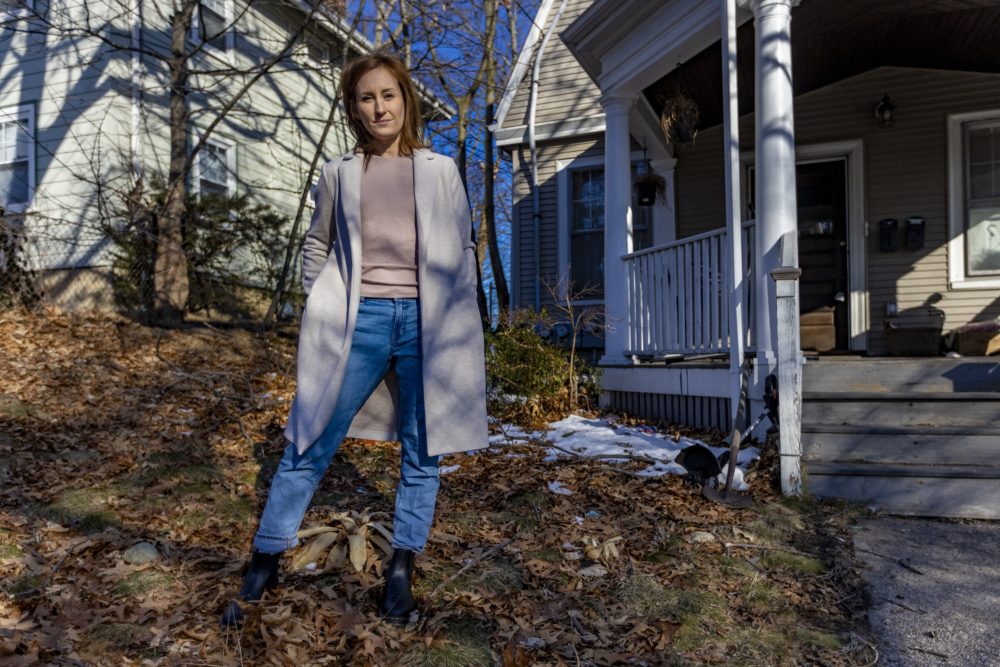Forced to improvise COVID policies, school nurses are reaching a ‘breaking point’

Brighton High School nurse Lauren O’Malley-Singh. (Jesse Costa/WBUR)
Every morning before school, Lauren O’Malley-Singh’s heart races as she straps on an N95 mask.
“I feel like I’m drowning,” said O’Malley-Singh, a nurse at Brighton High School in Boston.
She’s drowning in coronavirus tests. She gives upwards of 40 rapid tests a day, isolating the students who test positive, calling their parents and finding a way to get them home. When she’s not administering tests, she’s contact tracing as best she can and getting testing consent forms signed. Amid all that, she estimates that about once an hour, she’s helping a student find a place to get vaccinated.
The work spills into evenings and weekends, often without extra pay. Even at night, she can’t escape it.
“I wake up in the middle of the night dreaming of positive COVID tests. It’s really stressful,” she said. “Whatever I’m doing, it is not enough. And it’s not what should actually be happening for our communities.”
Surging COVID numbers have made for a sometimes-disorganized return to school after winter break. There are record case counts and changing guidelines for testing and isolation. A heavy burden has fallen on school nurses, who say they feel overwhelmed and under-supported.
“I go into work, and I am ready for the battlefield,” said Erin McManus, a nurse at the Edison School in Brighton. She said COVID work has eclipsed all the other work school nurses do. “We have stacks of physical exams. We have kids that need vision screenings and hearing screenings to be referred,” she explained. “All of those things are getting pushed back.”
In this hectic environment, O’Malley-Singh said, there’s a lack of clear protocols and checklists to speed the work and make sure school nurses aren’t missing anything. Instead, she’s coming up with policies on the fly.
For example, she said, there’s no clarity about what to do if a kid tests positive, and there’s no parent to pick them up. “What if they use the school bus, and that’s their only way to get home?” she asked.
Similarly, O’Malley-Singh said there was no handout to provide to parents if their kid tests positive, informing them of what to do, and when the child will be allowed back in school. So, she wrote up her own handout and translated it into several languages.
O’Malley-Singh compiled many of the things she’s learned about handling COVID into a 28-page Google Doc that she’s shared with fellow nurses. But the lack of clear, official protocols is troubling, she said.
Read the rest of the story and hear the audio version at WBUR.org.
